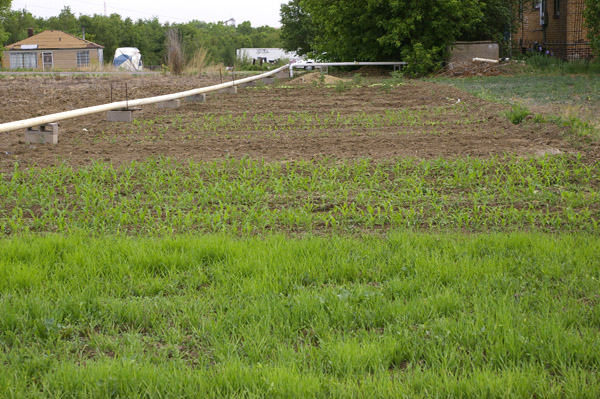 |
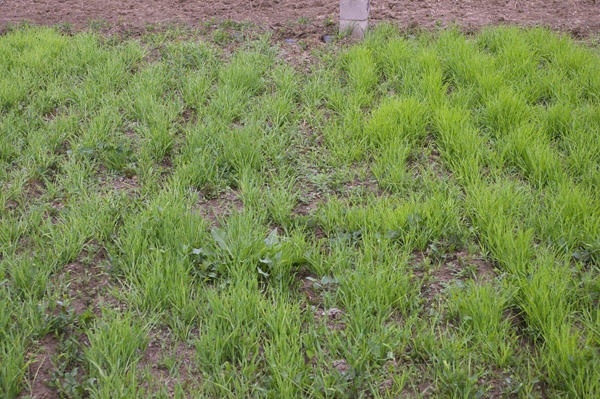 |
| This is my garden on May 28th, 3 weeks after planting barley, wheat, blue
corn, the first 4 rows of sweet corn, beets, squash, pumpkins, cantaloupe,
carrots, celery, beans, and 3-month-old tomatoes. |
It's hard to tell the difference unless the light is just right, but the
barley is on the left is just a little darker in color, a little more blue,
than the wheat on the right. It started poking through the soil on the 5th
day, and is 3-weeks-old in this shot. |
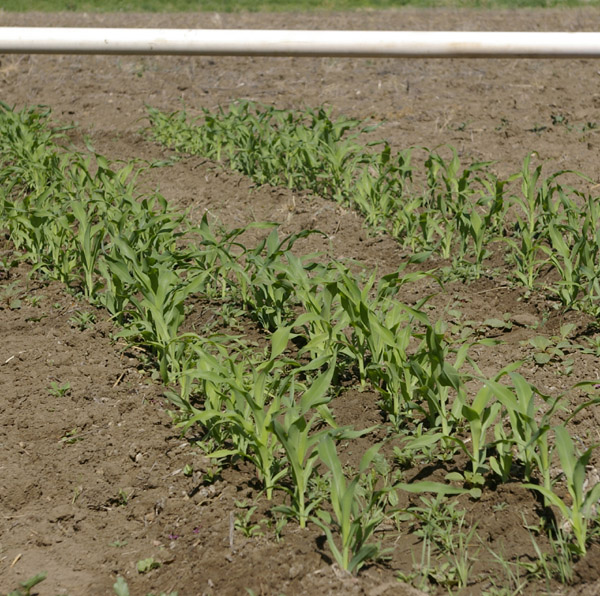 |
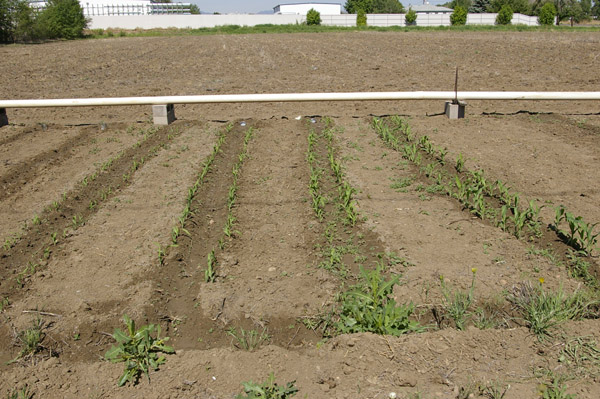 |
| Blue corn is a strain of field corn, as opposed to sweet corn. Field corn
is used to make corn meal and as feed for livestock. You'll see by comparison
that the blue corn is considerably bigger at three weeks than any of the
sweet corn. The stalks and often the ears of field corn generally grow much
larger sweet corn. |
I planted two varieties of sweet corn this year: Silver Queen and Early
Golden Bantam. I thought I'd try planting in a different configuration than
usual to see how it went. We've always planted single rows, an equal distance
apart, with a ditch for each. This year, I planed a row on each side of
each ditch, and spaced the ditches farther apart. The ditch on the right
has two rows of Golden Bantam, planted at the same time as the 2 rows of
Silver Queen to its left. The GB comes up 1 to 2 days sooner than the SQ
and, as you can see, is well ahead of it it height. The next 2 rows to the
left ar GB planted a week later, and to their left is SQ planted at the
same time. I'll make 4 plantings a week apart to give me fresh sweet corn
for a good 6 weeks later this Summer. |
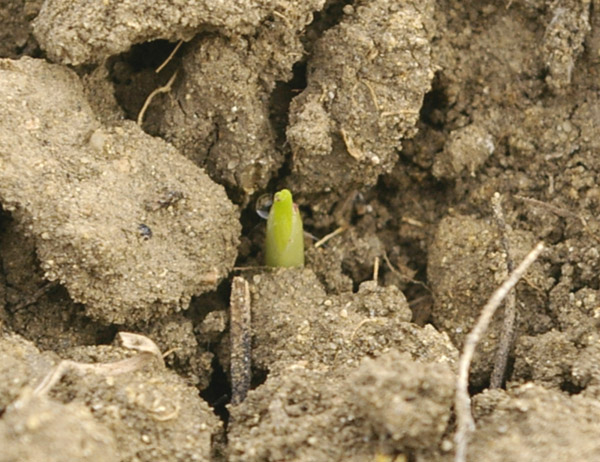 |
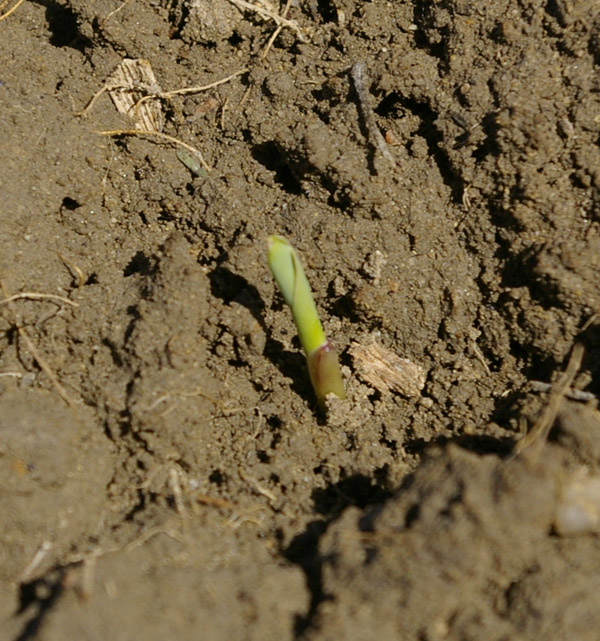 |
| Corn is a grass and it germinates really fast! This is Golden Bantam on
Saturday. It was planted on the previous Monday. |
This is Golden Bantam on Sunday. I planted some grass seed in the bare
spots in our lawn at the same time and haven't seen a sprout yet. |
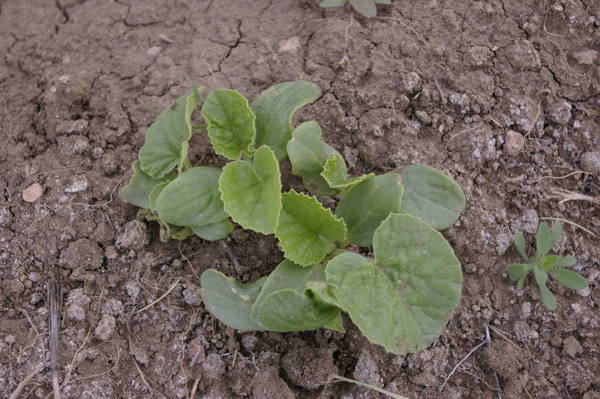 |
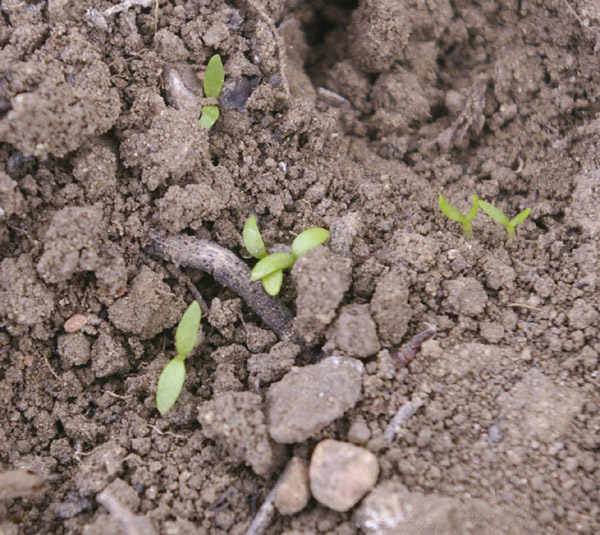 |
| Cantaloupe at 3 weeks. It came up in about 10 or 12 days. The pumpkin
took longer and I still haven't seen any squash. I don't think the squash
are coming. |
I was beginning to wonder about the celery but it finally starting to
show a couple of days ago. Just short of 3 weeks. At least, I reasonably
sure this is it. Apparently it is quite slow and finicky getting off the
ground. Probably because it knows it will be cut and buried alive later
in the year in a process called trenching that allows the celery to continue
to live and grow without light after the weather turns. This produces a
pale, tender, and sweet delicacy rarely seen these days. |
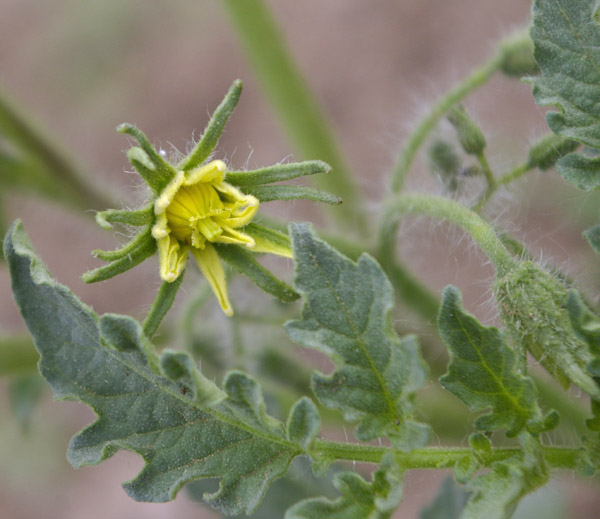 |
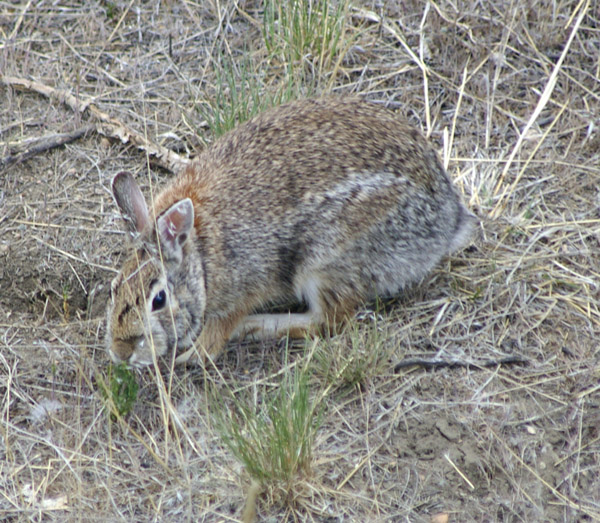 |
| I found a knarley, pumpkin-shaped tomatoe in a crowded market in south-central
Mexico last January. It looked like what the new-wave of American gardeners
and farmers call heirloom. I ate it and it was really good. Not quite as
acidic as the Margarita tomatoes of Venezuela, but very tasty. I scraped
the seeds out before I ate it, spread them on a paper towel to dry and threw
them in my bag. I sprouted them indoors in February and put them out before
the last frost. I thought I'd test that warning about not covering them
with plastic buckets to protect them from the cold. On that last freeze
we had a couple of weeks ago, in mid-May, I covered some with plastic buckets
and the others with bushel baskets. This is one of the plants I covered
with a bushel basket! The others are still recovering from being frozen
to within one leaf bud of their lives. |
There is an overabundance of these evil little predators around the farm
this year - more than I've ever seen here. What are those lazy coyotes up
to anyway? They'd better start doing their job before these guys discover
my garden. I suspect one or two of them already has, because I found a couple
pieces of leaf laying where there used to be a cantaloupe plant the other
day. |
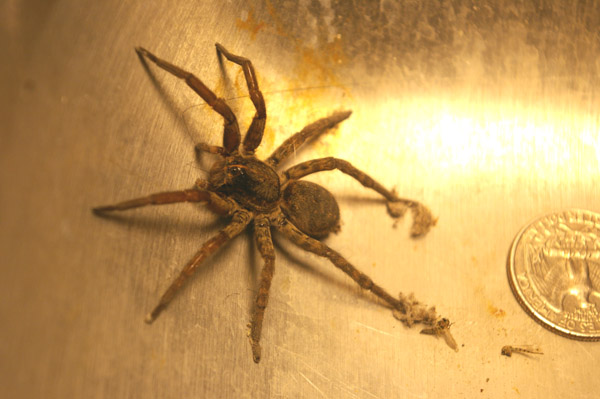 |
|
| This monster wasn't in my garden, but he was hanging out in the workshop
sink when I went down there to repot one of my houseplants tonight, Tuesday,
May 30. |
|
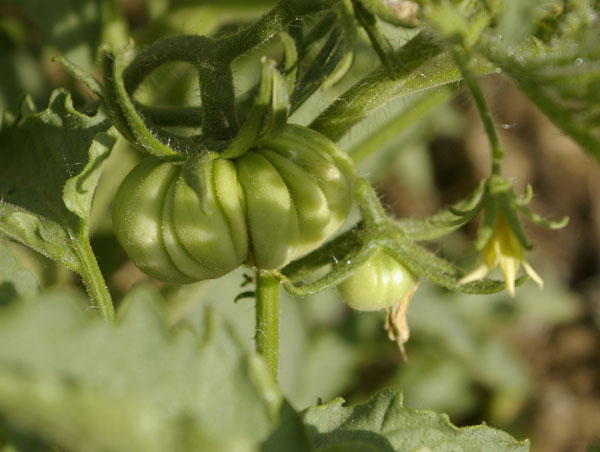 |
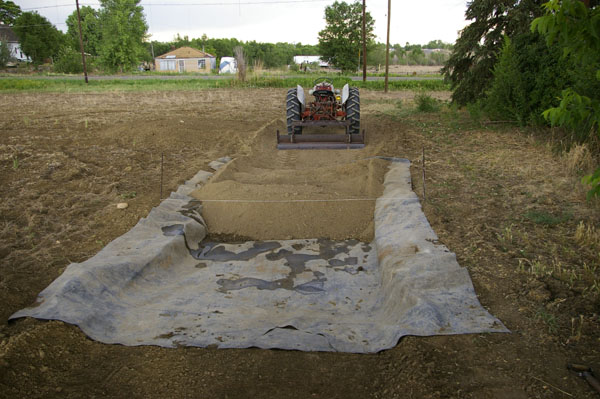 |
| These illegal Mexican imigrants grow fast! This was taken on June 7th.
I sprouted the plants from seed I scraped out of a tomatoe I bought in small
backwoods town in Oaxaca. |
Midway construction of the wild rice paddy on June 11th. Seedlings are
expected to arrive on the 16th. |
| |
|
| |
|











